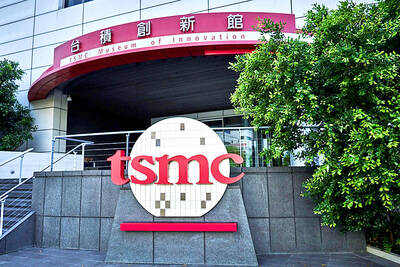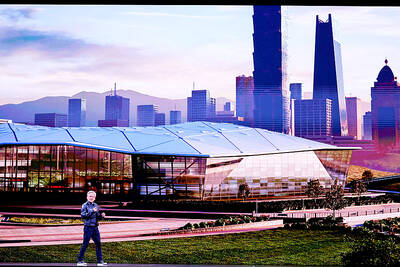Academia Sinica yesterday raised Taiwan’s GDP growth forecast for this year from 2.43 percent to 2.65 percent on the back of robust exports, but said that rising trade tensions and financial market volatility are risks to growth.
“Taiwan’s economy should remain on a course of stable expansion, but downside risks are growing,” Academia Sinica research fellow Ray Chou (周雨田) told a news conference.
The upward revision makes the Taipei-based institute the most optimistic among its peers, higher than the government’s projection of 2.6 percent growth.
Robust global demand has enabled Taiwan to achieve a better-than-expected trade volume and healthy manufacturing activity, Chou said.
Major economic gauges show that the growth momentum should be sustainable in the second half, Chou said, citing the official manufacturing purchasing managers’ index, industrial output and private consumption data.
Exports and imports are forecast to rise 4.03 percent and 4.91 percent respectively this year, as price hikes should help absorb the negative impact linked to the tariff row between the US and China, the institute said.
Exports advanced 10.9 percent annually in the first six months of the year and imports grew 10.8 percent from the same time last year, as Taiwan’s foreign trade benefitted from faster global economic growth, according to government statistics.
Taiwan is home to the world’s largest contract suppliers of critical electronic parts used in smartphones, laptops and TVs, as well as Internet of Things and artificial intelligence applications.
Consumer prices are forecast to increase 1.58 percent this year, after picking up 1.6 percent in the first six months, as the effect of cigarette tax hikes last year tapers off, Chou said.
The wholesale price index is likely to rise 2.89 percent for the full year, faster than the 2.37 percent advance in the first six months, he said.
A weaker New Taiwan dollar would translate into a higher cost burden for imported goods, he said.
The labor market has improved, with the jobless rates for the first time in six months standing at 3.66 percent and likely to average 3.7 percent this year, Chou said.
A stable job market should lend support to private consumption, which is forecast to expand 2.41 percent this year, he said.
Retail, wholesale and restaurant revenues grew 4.49 percent in the first half, aided by wage increases and a vigorous stock market, the institute said.
Private investment is forecast to increase 3.34 percent this year, as local firms become more active in capital expenditure, it said, adding that the government is helping by removing investment barriers.

SEEKING CLARITY: Washington should not adopt measures that create uncertainties for ‘existing semiconductor investments,’ TSMC said referring to its US$165 billion in the US Taiwan Semiconductor Manufacturing Co (TSMC, 台積電) told the US that any future tariffs on Taiwanese semiconductors could reduce demand for chips and derail its pledge to increase its investment in Arizona. “New import restrictions could jeopardize current US leadership in the competitive technology industry and create uncertainties for many committed semiconductor capital projects in the US, including TSMC Arizona’s significant investment plan in Phoenix,” the chipmaker wrote in a letter to the US Department of Commerce. TSMC issued the warning in response to a solicitation for comments by the department on a possible tariff on semiconductor imports by US President Donald Trump’s

The government has launched a three-pronged strategy to attract local and international talent, aiming to position Taiwan as a new global hub following Nvidia Corp’s announcement that it has chosen Taipei as the site of its Taiwan headquarters. Nvidia cofounder and CEO Jensen Huang (黃仁勳) on Monday last week announced during his keynote speech at the Computex trade show in Taipei that the Nvidia Constellation, the company’s planned Taiwan headquarters, would be located in the Beitou-Shilin Technology Park (北投士林科技園區) in Taipei. Huang’s decision to establish a base in Taiwan is “primarily due to Taiwan’s talent pool and its strength in the semiconductor

An earnings report from semiconductor giant and artificial intelligence (AI) bellwether Nvidia Corp takes center stage for Wall Street this week, as stocks hit a speed bump of worries over US federal deficits driving up Treasury yields. US equities pulled back last week after a torrid rally, as investors turned their attention to tax and spending legislation poised to swell the US government’s US$36 trillion in debt. Long-dated US Treasury yields rose amid the fiscal worries, with the 30-year yield topping 5 percent and hitting its highest level since late 2023. Stocks were dealt another blow on Friday when US President Donald

UNCERTAINTY: Investors remain worried that trade negotiations with Washington could go poorly, given Trump’s inconsistency on tariffs in his second term, experts said The consumer confidence index this month fell for a ninth consecutive month to its lowest level in 13 months, as global trade uncertainties and tariff risks cloud Taiwan’s economic outlook, a survey released yesterday by National Central University found. The biggest decline came from the timing for stock investments, which plunged 11.82 points to 26.82, underscoring bleak investor confidence, it said. “Although the TAIEX reclaimed the 21,000-point mark after the US and China agreed to bury the hatchet for 90 days, investors remain worried that the situation would turn sour later,” said Dachrahn Wu (吳大任), director of the university’s Research Center for